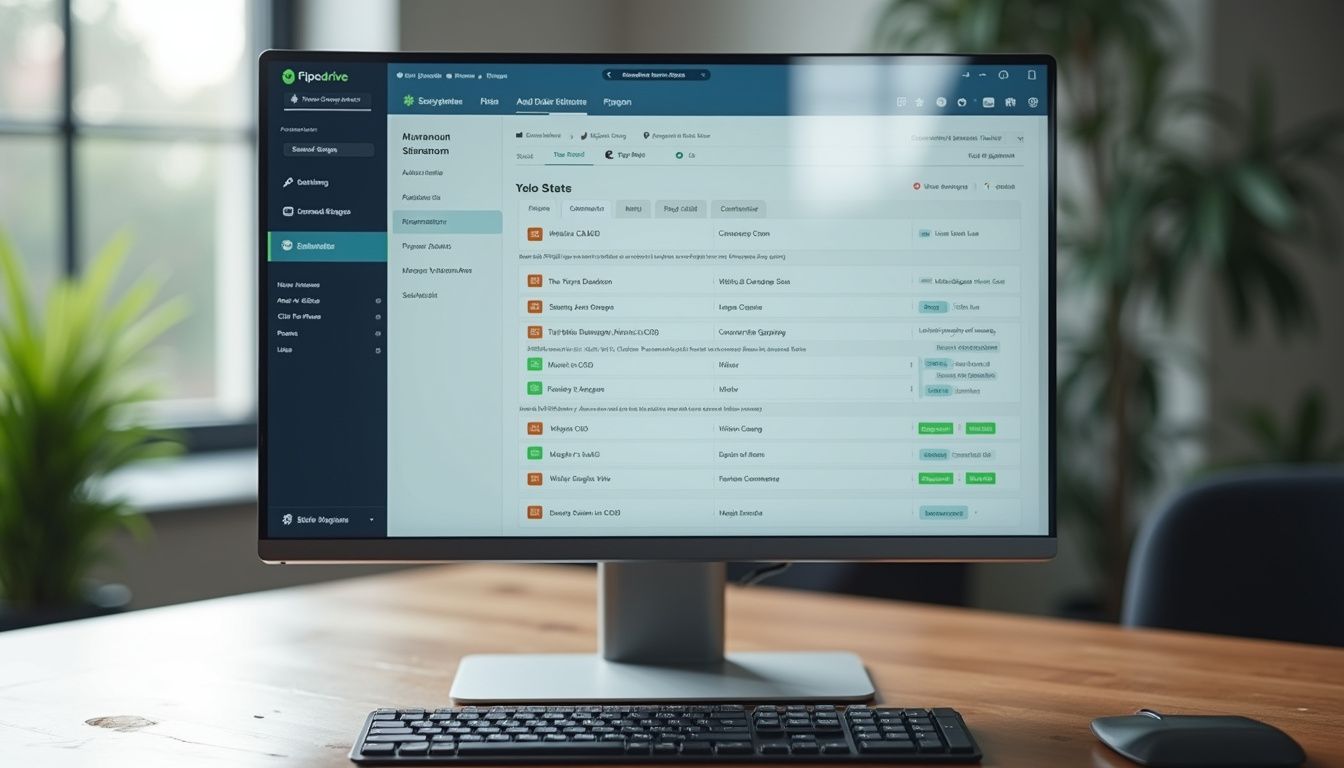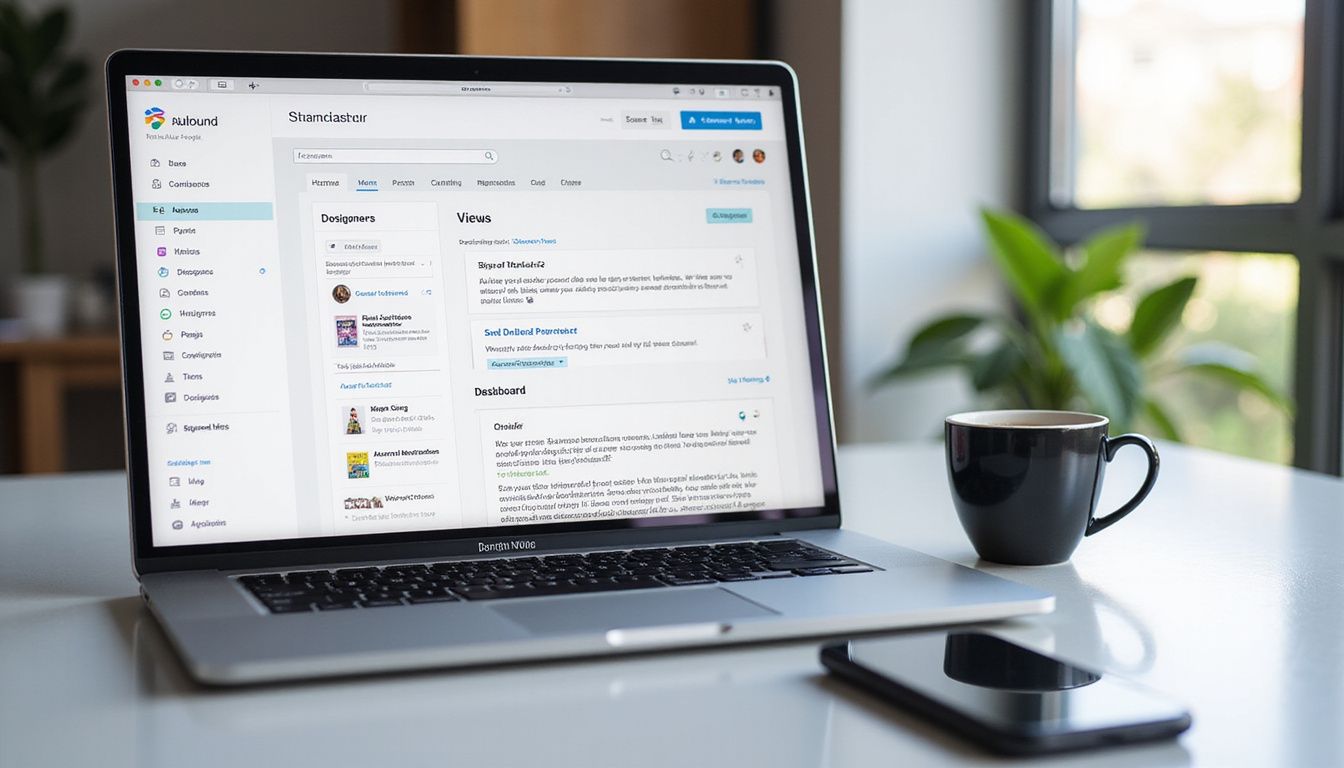Many sales reps struggle to keep track of leads and follow-ups in their CRM software. Pipedrive sequences help automate tasks and emails, making it easier to manage the sales pipeline.
This post explains how using Pipedrive’s automated workflows can boost customer engagement and improve business growth. Read on to see how your sales team can save time and close more deals with smart tools like AI-powered insights and task reminders.
What are Pipedrive Sequences?

Pipedrive sequences are step-by-step workflows in a CRM that help salespeople manage deals and follow-ups. They combine manual emails, automated tasks, and lead-nurturing actions into a clear structure.
This approach reduces repetitive work for sales representatives. It also helps organise the customer journey from lead generation to closing.
Sales teams can automate routine steps using tools like FreJun within Pipedrive. Automatic logging of calls and reminders boosts efficiency and keeps records updated on social media platforms like Slack or Microsoft Teams.
Sequences fit any sales stage, such as onboarding new clients or running re-engagement marketing campaigns. Key features of Pipedrive sequences provide strong support for streamlining communication and improving sales performance with better progress tracking tools, which will be discussed next.
Key Features Overview:
- Personalised manual emails for sending the right message.
- Automated follow-ups to ensure timely engagement.
- Structured lead-nurturing workflows to guide prospects through the sales funnel.
- Progress tracking tools that monitor performance and KPIs.
Key Features of Pipedrive Sequences

Pipedrive Sequences offer several useful features. These tools help sales teams connect with leads efficiently and keep track of their progress. Personalised emails allow for a unique touch in communications.
Automated follow-ups save time and ensure no lead slips through the cracks.
Personalised manual emails

Personalised manual emails help salespeople send the right message to their target audience. They use information from CRM tools like Pipedrive to customise content for each subscriber or segment.
These emails often start drip marketing campaigns, such as a welcome series, and can boost customer experience by making messages feel unique.
Using 25 customisable cold email templates helps scale prospecting and avoid spam filters. Subject lines should be short, relevant, and clear in intent; this improves open rates and click-through rates according to best practices.
A/B testing of subject lines helps find what works best for different groups. Each email must include an easy-to-skim format with a call to action and unsubscribe link due to GDPR and CAN-SPAM rules.
Most subscribers read emails briefly—just 2–8 seconds—so messages need strong formatting, engaging text, and direct CTAs for better results along the sales funnel.
Follow-up task automation

After sending manual emails, automating follow-up tasks with tools like Pipedrive and FreJun can boost sales team performance. Automated reminders stop salespeople from missing leads by scheduling timely calls or meetings inside the CRM.
FreJun’s integration lets users plan auto-connected calls at set times, reducing delays and missed appointments.
Auto-dialling features save time and lower mistakes linked to manual phone work. Call outcome-based automation helps managers adjust strategies using direct results pulled from analytics dashboards.
Regular updates of CRM data keep teams on track and prevent lost sales chances. Analytics in FreJun allow leaders to review which automated actions drive results, giving better insight into lead nurturing effectiveness and helping improve return on investment for growing enterprises and startups alike.
Structured lead-nurturing workflows

Drip marketing in Pipedrive helps guide leads step by step through the sales funnel. Simple products use two or three welcome emails, while complex or high-value offers often require longer drip sequences to build brand awareness and trust.
For example, Altitude Sports uses a discount in its welcome series to prompt quick action from new subscribers. CRM systems like Pipedrive automates these processes and helps segment customers based on pain points.
This ensures content remains relevant for each audience. Automated campaigns start when users interact with landing pages or opt-in forms that promise something valuable. LeadBooster, one of Pipedrive’s tools, captures website leads then adds them straight into nurturing workflows.
These campaigns aim for specific goals such as premium sign-ups, re-engagement after inactivity, product education, and lead qualification using predictive analytics powered by artificial intelligence.
A structured workflow keeps every touchpoint clear so no lead is forgotten.
Salespeople use progress tracking tools and segmentation strategies to make sure all messages fit subscriber interests. The following bullet points summarise the main workflow steps:
- Initiate drip marketing with a series of emails.
- Automate task assignments and follow-ups.
- Segment leads based on behaviour and pain points.
Progress tracking tools
![]()
Progress tracking tools in Pipedrive use sales insights for daily call analysis and monitor performance. Managers get KPI reports throughout the day with data from sequences, calls, and completed activities.
The Sales Assistant uses machine learning algorithms to alert reps of missed deal values or suggest new actions. Visual dashboards show team progress across each pipeline stage with clear charts and data analysis. Over 400 marketplace integrations let teams connect other marketing tools, databases, email marketing apps like Google Apps, or document automation systems for deeper reporting.
Pipeline customisation supports workflow efficiency by letting businesses track unique enterprise resource planning goals and measure key metrics such as conversions and activity completion rates under GDPR-compliant privacy standards.
How to Build Sales Sequences in Pipedrive

To build sales sequences in Pipedrive, start by setting clear goals. Next, create a step-by-step process that guides your leads through their journey.
Step 1: Define your sales objectives

Clear sales objectives guide the whole sales sequence in any CRM. A team might focus on increasing premium sign-ups, re-engaging old leads, educating new users about features, or qualifying prospects. Sales objectives shape both the number of touchpoints and the type of content used in each Pipedrive workflow.
Sales Insights and AI-powered forecasting within Pipedrive help teams set these goals with data from performance metrics like click-through rates and conversions. Objectives must match key indicators for best results.
“Set measurable goals so you can improve your process over time,” is solid advice for anyone using CRMs like Pipedrive or enterprise resource planning solutions. Teams should also consider product complexity and customer needs, as this affects targeting and personalisation inside the marketing funnel while following rules such as GDPR or CAN-SPAM Act for good data protection and compliance.
Step 2: Create a structured workflow

Sales teams use Pipedrive to segment audiences and define workflow triggers, such as from landing pages or opt-in forms. Each step in the customer relationship management (CRM) process gets mapped clearly. For example, a structured sales sequence might start with a manual email, followed by an automated call, then add a follow-up task in the dashboard.
Kanban-style boards help salespeople track progress and move leads through each stage of the funnel. Workflows can include drip campaign templates with custom branding for every touchpoint. Custom fields also let users customise each workflow based on product type or funnel stage within Pipedrive’s enterprise resource planning (ERP) features. Campaign complexity often changes by deal size or marketing strategy goals. Teams test and refine these steps using engagement metrics and data analysis tools within Pipedrive before adding personalised manual emails to boost response rates next.
Step 3: Set up personalised manual emails

Pipedrive offers 25 customisable cold email templates for manual sequence steps. A salesperson can edit these using AI-generated content to match the brand voice and increase engagement. Each email should target skimmability, as most recipients scan subject lines in just 2-8 seconds. Subject lines must be relevant and short.
Personalisation is key for better open rates and click-throughs, shown by A/B testing best practices within crm tools like Pipedrive. Manual emails need clear calls-to-action and must include unsubscribe links to comply with the General Data Protection Regulation (GDPR). Integrating these manual steps with marketing automations helps keep delivery timely, especially in welcome or upsell sequences.
Step 4: Assign follow-up tasks

After each personalised manual email gets sent, the next step is to assign follow-up tasks. Automated reminders and Voice over Internet Protocol (VoIP) tools help users set up calls and meetings with leads at ideal times. For example, FreJun can auto-connect scheduled calls without extra effort.
Each task logs its outcome and important data which helps sales teams track progress in their crm system. The automation feature makes sure no lead is ever missed by scheduling follow-ups right after email contact. Sales managers use KPI reports to check if team members complete these steps on time.
The platform assigns tasks based on triggers like call results or a new sequence step. This cuts down human error and reduces manual work for everyone involved.
Using automated reminders means fewer missed leads and better conversion rates, says Vikram Singh, a leading CRM consultant.
Step 5: Monitor and optimise performance

Pipedrive’s analytics and reporting tools give sales teams real-time data on sequence performance. Sales Assistant uses generative AI to provide forecasts and actionable insights, such as which deals could close soon or need attention. Teams use these reports to track key metrics, like open rates or response times, for each step in the CRM sequence.
Sales managers can improve processes by removing leads who ignore three calls. Regular KPI updates highlight what works best. Companies should keep testing new strategies and share results across departments. Sentiment analysis helps refine campaigns and ensures the right message fits every stage. Security features protect campaign data while keeping customer information private, even when using Facebook or a virtual private network.
Benefits of Using Pipedrive Sequences

Pipedrive Sequences make lead nurturing easier. They cut down on manual tasks and save time for sales teams. This leads to better conversion rates and more success in closing deals.
Streamlined lead nurturing

Streamlined lead nurturing creates a smooth journey for potential customers. It ensures consistent communication throughout the buyer’s path. Drip marketing and structured sequences guide leads from one stage to another efficiently.
Timely follow-ups help prevent leads from slipping away. Automated campaigns save time and effort, targeting audiences based on their actions. Lead segmentation allows businesses to send relevant content to different groups within nurturing sequences.
This way, they keep potential buyers engaged and informed about products or services that fit their needs perfectly.
Effective communication is key in turning interest into sales.
Reduced manual workload

Streamlined lead nurturing makes the sales process easier. A reduced manual workload allows sales reps to focus on what matters most: building relationships and closing deals. Automation features like auto-dialling, call logging, and reminders save time by eliminating repetitive tasks.
AI-powered tools handle logging and scheduling without any need for manual input. FreJun integration enables one-click calling and automatic call recording in Pipedrive. This ensures that no important details are missed. Automated task assignments also play a crucial role; they ensure that follow-ups happen on time without human error.
Managers benefit from automated KPI reporting, which saves them from compiling data manually. This results in less busywork for sales teams and more energy directed towards selling success.
Improved conversion rates

Pipedrive sequences assist in enhancing conversion rates. Automated reminders and follow-ups ensure timely engagement with leads, increasing the chances of closing deals. The system flags high-potential deals using its AI-powered Sales Assistant and suggests next steps for a better approach.
Real-time performance insights enable sales teams to make swift changes. Tracking key performance indicators (KPIs) identifies which sequences work best, improving success rates in sales strategies. Centralised CRM data enhances personalisation, fostering customer confidence and enriching experiences for clients.
Examples of Effective Sales Sequences

Sales sequences can really boost your outreach efforts. For instance, a welcome email sequence sets the tone for new leads. Follow-up emails keep communication open after cold contact.
Lead nurturing sequences build relationships over time. Upselling and cross-selling sequences help increase sales from existing customers. Re-engagement campaigns revive interest in past clients who may have gone quiet.
Welcome email sequences
Welcome email sequences begin with sign-ups, registrations, or purchases. These emails aim to encourage the recipient to take quick action. A good example is Altitude Sports’ welcome email, which offers a discount for new subscribers.
Simple products might need 2 to 3 emails in this series, while more complex items may require additional messages. These emails prepare the ground for ongoing engagement and shape how customers perceive the brand.
Personalised templates from Pipedrive can enhance these campaigns, making them feel customised to each subscriber. Early engagement through these sequences increases the chances of converting leads into customers. Open rates and click-through rates effectively track their performance.
Follow-up after cold outreach
Follow-up after cold outreach is essential for success. Automated reminders in Pipedrive assist in ensuring timely contact after initial attempts. Sales teams can schedule calls and connect automatically using FreJun integration.
They can also set follow-ups based on call outcomes, adjusting their approach depending on the recipient’s response. Timely follow-ups can reduce the chance of losing potential leads. Sequences may include offering extra value or information to maintain interest.
FreJun’s analytics track how effective these follow-up calls are, providing insight into necessary improvements. KPI reports keep managers informed about overall outreach performance, while unresponsive contacts can be removed after three attempts to maintain data quality.
Lead nurturing sequences
Effective lead nurturing sequences guide prospects through education and value demonstration. They adjust in length and content based on product complexity or price. Automated content delivery occurs when leads take specific actions or reach certain stages in the funnel.
These sequences often feature product tutorials, testimonials, and highlights of key features. LeadBooster and other tools capture leads for these nurturing sequences. Personalisation makes the content relevant to each lead’s needs, while segmentation helps target different groups effectively.
Engagement metrics like click-through rates help teams refine their approaches over time. Using AI-driven insights optimises these strategies for better results in conversion rates.
Upselling and cross-selling sequences
Upselling and cross-selling sequences focus on past customers to encourage repeat purchases. They aim to build customer loyalty while boosting sales. These campaigns highlight complementary products or exclusive discounts. For example, Harry’s sends a special offer after someone buys a razor.
This strategy encourages additional sales with personalised recommendations. Automation plays a key role in timing offers based on recent purchases. Sequences can trigger actions based on specific customer behaviours or preferences. Marketers measure success through repeat purchase rates and revenue growth from these campaigns.
Segmentation allows targeting customers according to their purchase history, making each offer relevant and appealing. Next, the differences between sequences and automations in Pipedrive are explored.
Re-engagement campaigns
Upselling and cross-selling sequences lead to more sales. Re-engagement campaigns aim to win back inactive subscribers. These campaigns target users who have stopped interacting with content or emails.
Re-engagement emails often offer discounts, product updates, or exclusive content. NordVPN uses these strategies to recover dormant accounts effectively. Automated triggers can identify unresponsive contacts and start the re-engagement process automatically.
Campaign success is measured by reactivation rates and open rates. Customised content directly addresses reasons for inactivity, making it relevant to the user’s needs. A/B testing helps improve subject lines and offers for better results. Successful campaigns enhance database health and improve customer retention rates significantly.
Differences Between Sequences and Automations in Pipedrive

Sequences and automations in Pipedrive serve different purposes. Sequences involve a series of manual and automated actions for sales engagement. They often include sending personalised emails, making calls, and assigning tasks. These steps require human involvement to connect with leads effectively.
Automations take care of repetitive tasks behind the scenes. They handle activities like logging data, setting reminders, and sending notifications automatically. Automations can also trigger broader processes, such as moving deals through stages or assigning leads without user input. While sequences focus on lead interaction, automations aim to streamline daily CRM tasks for better efficiency.
Conclusion

Pipedrive sequences are a powerful tool for sales teams. They assist in nurturing leads and enhancing communication. These sequences automate tasks, simplifying daily work. Utilising personalised emails and follow-ups increases conversion rates. In summary, Pipedrive improves sales processes while saving time and minimising errors.
A brief comparison with alternative crm tools shows that Pipedrive offers competitive pricing, ease of use, and automates follow-up tasks to boost upsell opportunities while ensuring data security.
Disclosure: This content is provided for informational purposes only and reflects the views of industry professionals. No undisclosed affiliate links or sponsorships influenced the content.



.svg)










